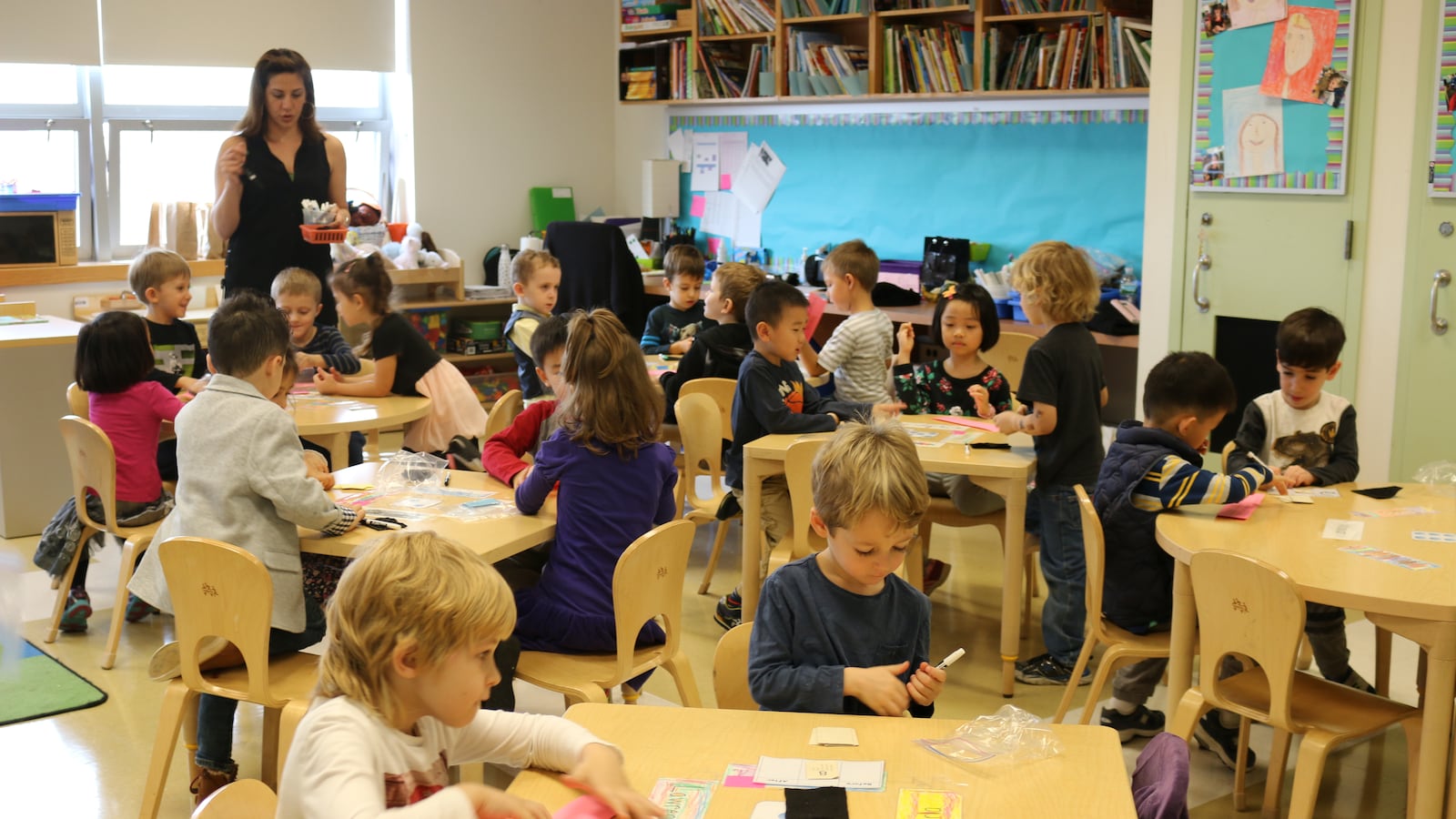The education department has quietly expanded an admissions preference to siblings of some older students, continuing a push to make it easier for families to transfer schools.
Starting in the 2018-2019 school year, students applying for pre-K or kindergarten at schools that include middle and high school grades will receive priority if they have a sibling who will attend the school for at least one more year. Before the change, preference was given only to students who had siblings in fifth grade or below.
The number of families impacted is likely small since only about 140 schools enroll students from kindergarten through middle school or high school. But the policy could change the calculus for parents angling for a spot in competitive gifted programs and other highly sought after schools — and make it harder to meet school diversity goals.
The education department says it expanded the admissions priority partially in response to the number of transfer requests received from parents who would like their children to attend the same school. (The city did not provide a tally of such requests.)
“This change was based on community feedback and enrollment trends, and allows for more families with multiple children in school to have greater consistency and continuity in the elementary school admissions process,” education department spokesman Doug Cohen wrote in an email.
It’s the latest in a shift in approach to school transfers, which once were notoriously difficult to receive. The previous administration argued that transfers should be limited to extreme cases — including serious safety concerns, medical issues, or long commutes — to minimize disruptions to schools and students.
By contrast, the education department under Mayor Bill de Blasio has expanded the circumstances under which students can switch schools. In 2016, the Panel for Educational Policy decided that parents could request a transfer if their child “is not progressing or achieving academically or socially,” leaving it up to education officials to make a decision in each case.
The change in sibling priority will only affect a small number of families who have children with large differences in age — and schools that span multiple grade bands. But those schools can be among the most selective, such as The Children’s School in Brooklyn, and the Manhattan School for Children on the Upper West Side.
While the new rules could make logistics easier for some families, it may have other consequences.
About 17 of the affected schools have gifted and talented programs, such as New Explorations into Science Technology and Math, K-12 school in lower Manhattan that is also known as NEST+M. Robin Aronow — a consultant who founded School Search NYC, which helps families navigate the admissions process — said that giving more students a preference could limit the already scarce number of seats available in those programs. (Siblings will still have to earn qualifying scores on entry tests.)
“It’s one more factor into the equation,” Aronow said. “It does impact other people trying to pick up those seats.”
By limiting the number of slots that are open to new families, the change could also make it tougher on schools that are aiming for greater student diversity. For example, gifted programs are starkly segregated: Black and Hispanic students make up only 27 percent of students in gifted classes, though they comprise close to 70 percent of students citywide. Some gifted programs, such as Brooklyn School of Inquiry, have joined city integration efforts by reserving seats for students who are low-income or meet other criteria.
In most cases, the minimum number of spots available through the “Diversity in Admissions” initiative will stay the same, according to the education department. But low-income students may face stiffer competition for the seats that fall outside the program, with more slots possibly accounted for by siblings.
“It makes it harder for families to get in, and the desirable schools are not particularly diverse,” said Laura Zingmond, senior editor at the school review website InsideSchools. “I can’t see how that fosters diversity.”
Clarification: This story has been updated to more clearly describe how the city’s Diversity in Admissions program could be impacted by the expanded sibling preference.


